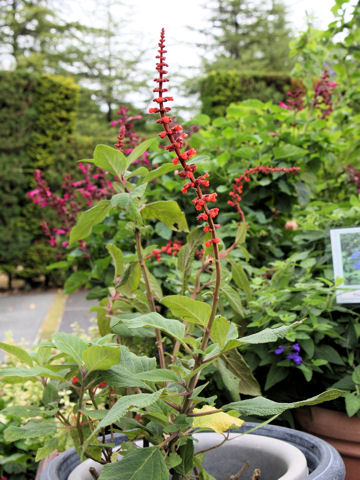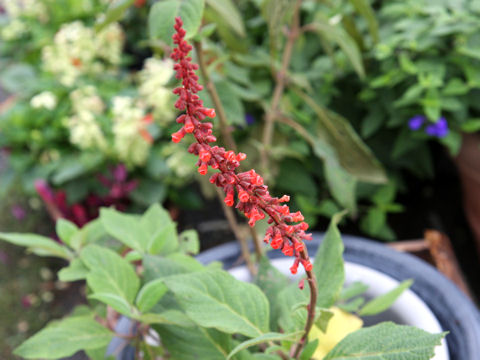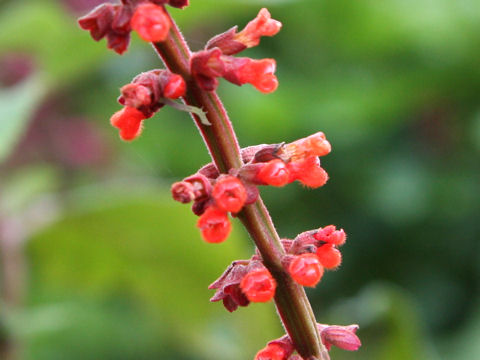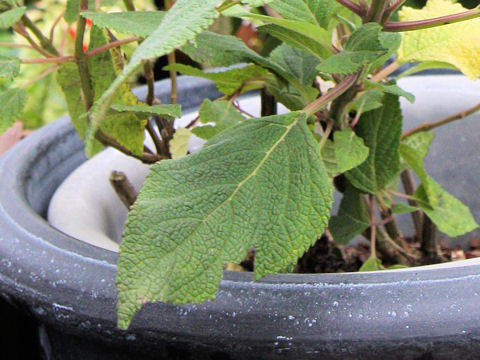 |








|

|
ブラジルが原産です。あまり枝分かれせず、高さは120~180センチになります。葉は卵形で濃緑色、鋸歯があります。秋に長い総状花序をだし、橙赤色の花を咲かせます。花茎や新葉の葉柄は、赤褐色のビロード状の毛に被われます。
|

|
シソ科アキギリ属の小低木で、学名は Salvia confertiflora。英名はありません。
|

|
The Salvia confertiflora belongs to Lamiaceae (the Mint family). It is a perennial shrub that is native to Brazil. This shrub is not too branched and can reach 120-180 cm in height. The leaves are ovate, dark green and serrated. The orange-red flowers bloom in the long spikes in fall. The velvety red-brown hairs are covered on the flowering stalks, the petioles of the new leaves.
|

|
茨城県水戸市「水戸市植物公園」にて、2009年11月14日撮影。
|



